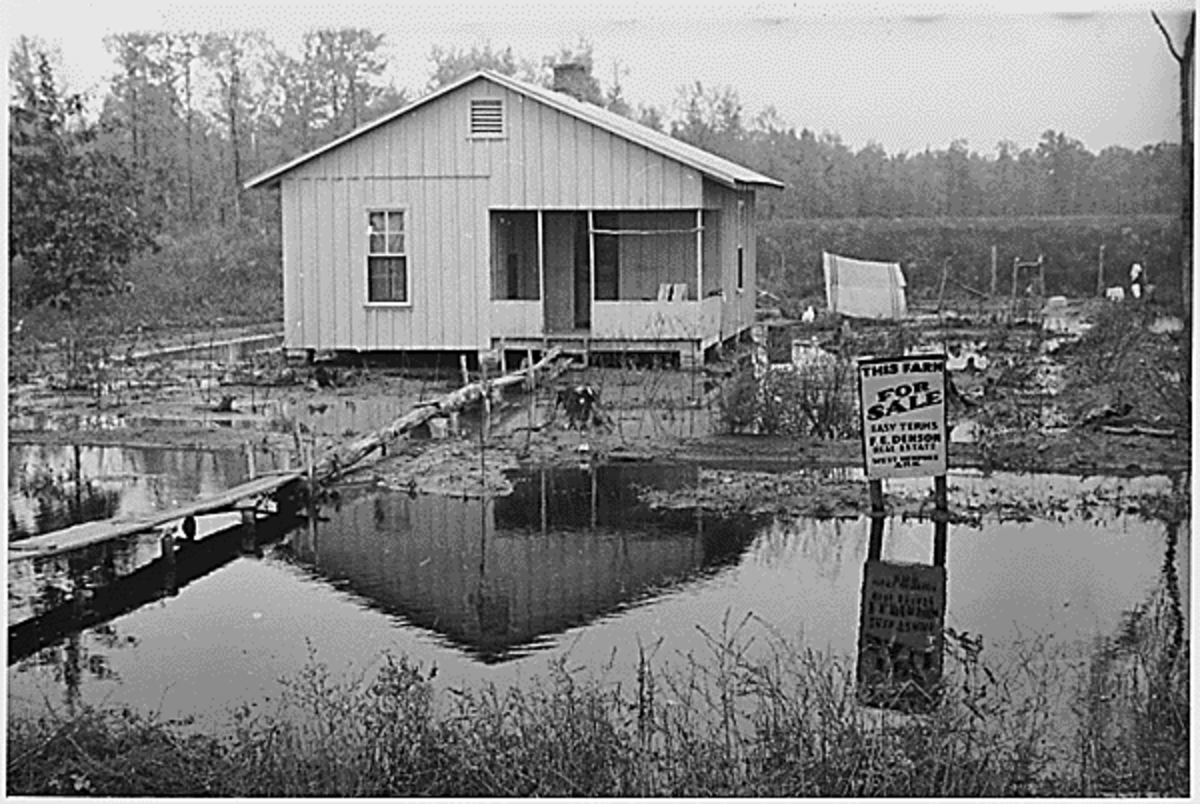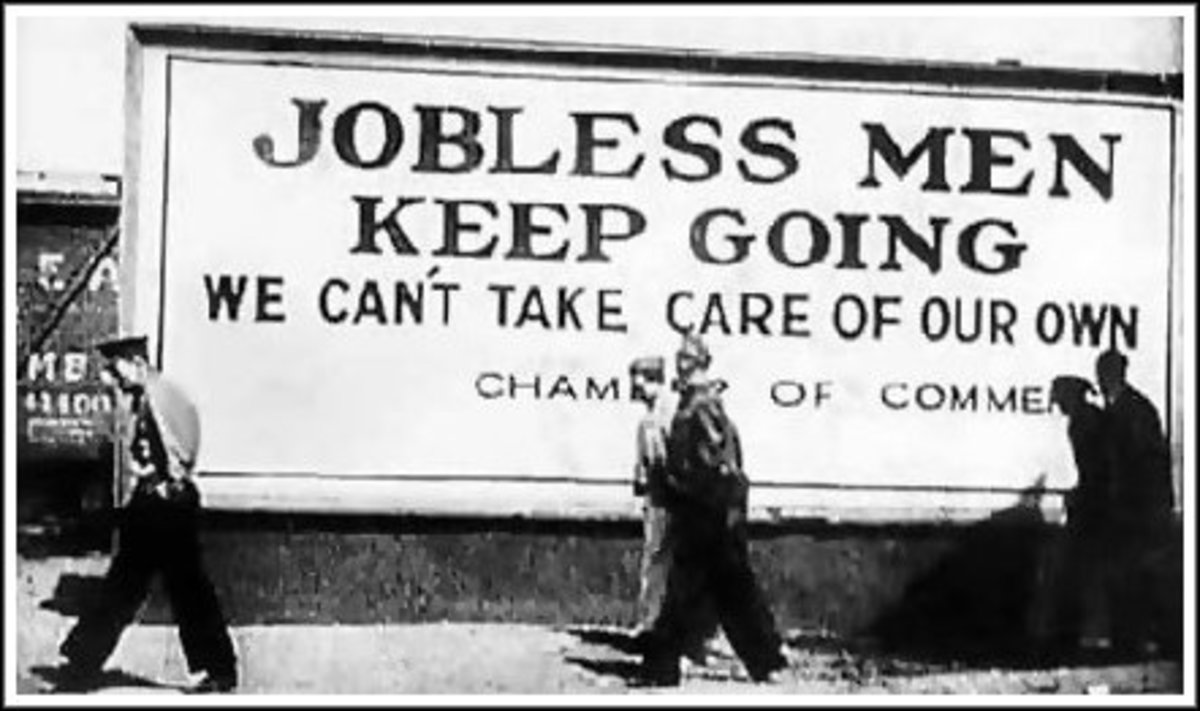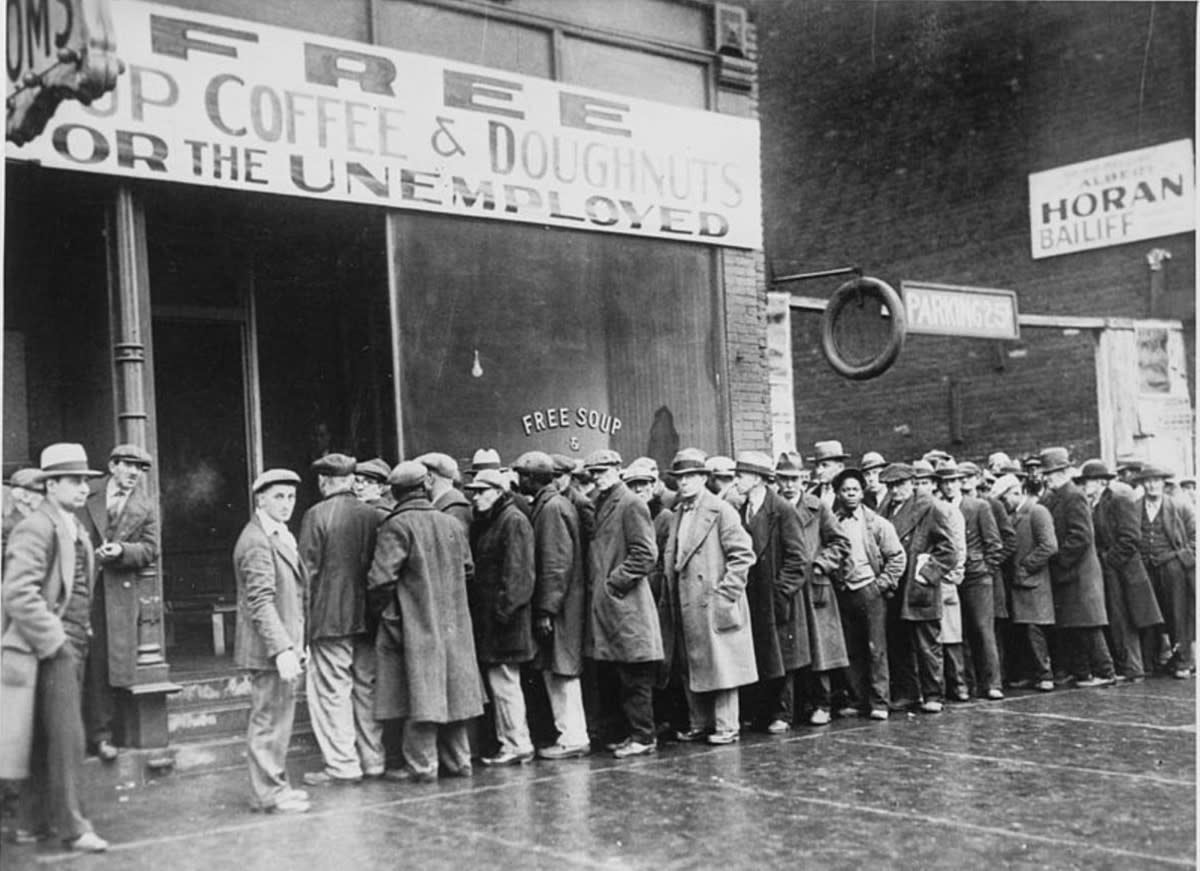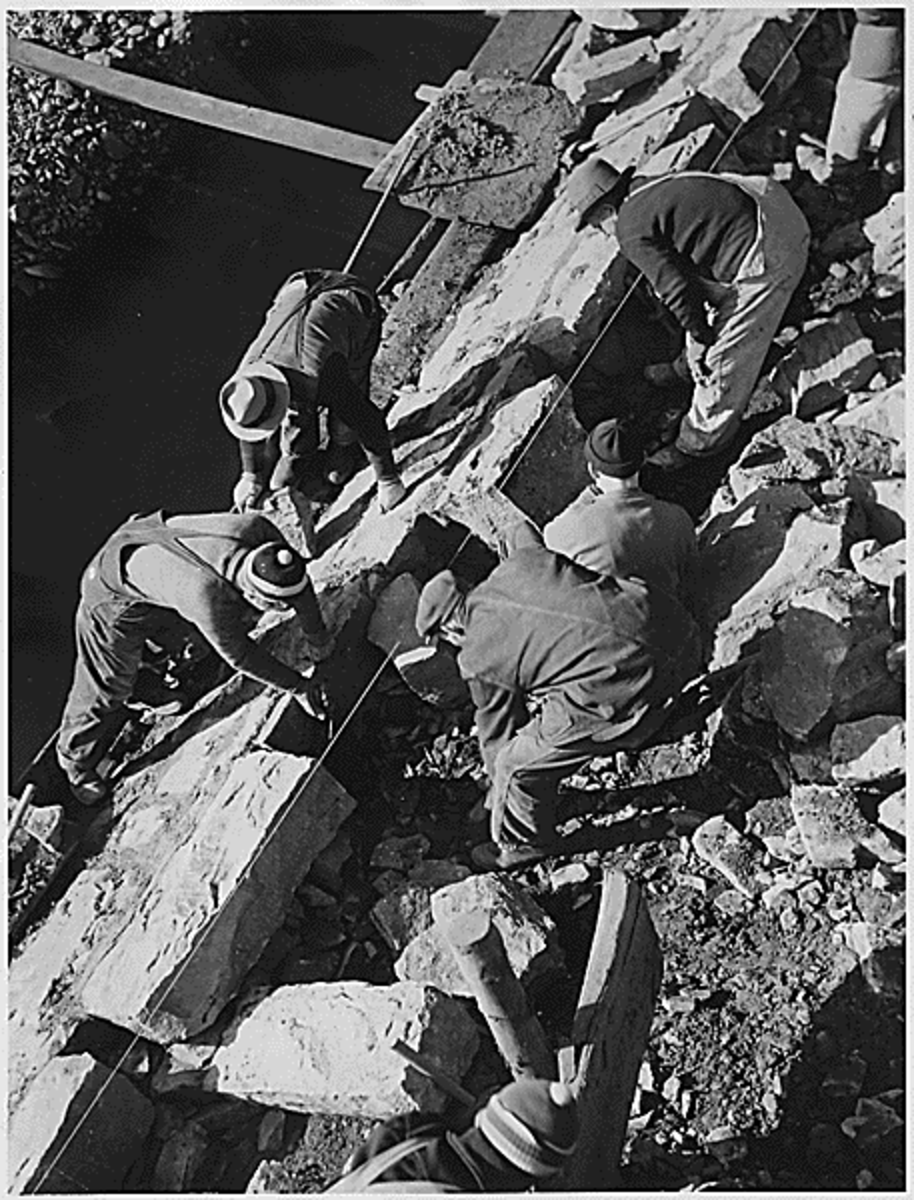The Great Depression And New Deal
During the period of 1933-1936, the United States of America brought into effect economic programs, with the intent of rebuild the economy. The great depression (1929-1933) brought the nation to its knees. The effects of these programmes were felt around the world.
Reasons for introduction
Roosevelt introduced the New Deal due to the fact that America was in the depression after the boom of the 1920’s. The primary reason for why America was that the depression was due to the Wall Street crash.
In the 1920’s when share prices were steadily rising, there were investors in the market called speculators. It is a type of gambling; they buy stock ads then sell it when the price rises. In 1920 there were 4 million share holders in America, by 1929 there were 20 million. Share prices sky rocketed. However by the end of the twenties, there was a drop in confidence of rising stock prices, hence there were more sellers then buyers and the stock market crashed on.
Even before this the American economy showed signs of weakness. Demand began to subside for American products. This began the confidence dip and contributed to the Wall Street Crash. The reverberations of the crash were felt around the world. Many economies with strong ties to America collapsed. While back in America the rich were hit hardest as they had invested the most. Many speculators had no choice but to declare bankruptcy, however the worst was when banks that had taken part in speculation began to go bankrupt. From 1929 to 1931, 4305 banks declared bankruptcy. The biggest bank to go under was The Bank of the United States in New York, which had 400,000 depositors and almost one third of New York banked there. American trade also dropped from $10 billion in 1929 to $3 billion in 1932. Roosevelt would have seen that Banks were a key part in sustaining the economy and this would have played a huge part in his planning and running of the New Deal. One of the first legislations that he passed was the Emergency Banking Act.
The depression had massive impacts on American people from all walks of life, from farmers to city executives. Food prices were so low that farmers could not afford to pay their mortgages. Many left and travelled the country searching for jobs. Circumstances were no better in the cities of not worse, in Toledo unemployment was at 80%. The rich of the 1920’s were left to queue up for food in the 1930’s. Families had to scavenge in dumpsters to find food. Through 1931, 238 people were admitted to hospital in New York from malnutrition or starvation, 48 of them died. This would have opened Roosevelt’s eyes to the suffering of the people of America. This would show him the cost of doing nothing. He also saw the importance of helping the less fortunate and the weakest of society. This was also a major part of the New Deal.
Leading up to the 1932 presidential campaign; Americans were shocked, angry and appalled at the Depression. They blamed the current president Herbert Hoover, as he had allowed the situation to become so dire. Farmers protested their discontent of Hoover’s reluctances to help the citizens of America. ‘In Hoover we trusted now we are busted!’
Although Hoover saw the discontent at his leadership, The Republican party and himself were very reluctant to change their policies. He felt that Social Security is the responsibility of the local government of charities. He was worried that if relief was given to the people then they would not go back to work and just live off Social Security.
Hoover looked heartless in the eyes of the American people, because of his stubbornness America was being brought to its knees. He further lowered his reputation by denying protesting World War One servicemen their war bonuses and accused them of being criminals and communists. They were dispersed with machine guns, tanks and tear gas.
Roosevelt on the other hand was a world away in the eyes of the voters. Due to their deep hatred of Herbert Hoover, Roosevelt won a land slide victory. The main policy that won Roosevelt the election was The New Deal. It promised change and improvement which is exactly what the people of America needed and desired. There were three main reasons why Roosevelt introduced The New Deal:
His political beliefs were a main reason for introducing The New Deal. Roosevelt believed in ‘active government’ where the government was proactive in improving the standard of living for the people of America. He wanted to make changes and he felt that this was the only way to bring America out of the depression. He did this by setting up aims and passing bills, creating agencies to achieve these aims. Roosevelt was prepared to spent public money to achieve his aims. He spent billions of dollars on getting Americans back to work.
As governor of New York he had already began to implement some of his policies in the state. Roosevelt unlike many was not afraid to ask for advice from experts. He spoke to economic experts, factory owners and union leaders to develop the best possible strategy to bring America out of the depression. These characteristics made him introduce the New Deal to help America.
The second reason why Roosevelt introduced The New Deal was learning from his predecessor, Herbert Hoover. Hoover was a great president for America when the economy was booming and cash flowing freely. However when the Wall Street crash occurred and the depression began, Hoover’s policies seemed harsh. Hoover believed in self help and did not feel that it is the responsibility of the government to help the people. He was named ‘The do nothing president’ and that is what he did. There was no attempt to help the farmers or to stabilise banks. From the past mistakes of Hoover, Roosevelt saw drastic changes had to be made to bring America out of the depression. The New Deal would introduce social security and create a welfare state, the weak, old and unemployed would receive help, this is what Roosevelt wanted to achieve.
The third reason why Roosevelt wanted to introduce The New Deal is his patriotism. He saw what America was like during the Boom period of the 1920’s, he also saw the devastation the depression had on America, and effects on the people. He believed that radical changes of policies and the spending of public money was the only way to bring America out of the depression. The New Deal was the lifeline that America required. Roosevelt believed in this and felt that he was the right person to make these new changes. Being so patriotic he would not pass a chance to save America.
These three reasons are the main stimulant for Roosevelt to introduce The New Deal and also shaped many aspects of it.
The main aims & features
The features of the New Deal revolve around the aims of Roosevelt. He had four clear aims, to achieve this he set up the alphabet agencies and passed acts. The four aims are:
-
Getting America back to work.
-
Protecting their savings and property.
-
Providing relief for the sick, old and unemployed.
-
Getting American Industry and agriculture back on its feet.
He began to implement the alphabet agencies and drastic changes to bring America out of the depression. For his first aim ‘Getting America back to work’ there were several alphabet agencies set up. The Civilian Conservation corps or the CCC targeted young unemployed men and gave them jobs for six months. If they went back to unemployment, then they would rejoin the CCC. The men worked on improving infrastructure and roads around America. 2.5 million Jobs were created; each person was paid $1 a day however they were forced to send $25 back to their families every month.
The Tennessee valley Authority or the TVA was also an alphabet agency set up to create jobs. It also made the land, which was a dust bowl, into fertile land and also provided water for irrigation. Dams were built over the seven state areas, this produced hydroelectricity for the surrounding area. It encouraged inter-state relations.
Although unemployment was high, there were still many million that were working in factories and Roosevelt wanted to improve their working conditions. He did this by setting up the National Recovery Agency of the NRA. This improves the working conditions of factory workers, by introducing social security and pension schemes. It also outlawed child labour. Companies can voluntarily accept to accept the terms, and display the symbol of the Blue Eagle. However the disadvantage was that there was no enforcement; the rules can be easily broken. In effect the NRA tries to create a trade union.
What was referred to as the Second New Deal were the revised alphabet agencies that were introduced after the first hundred days. This included the Public Works Administration or the PWA. The PWA spent $3.3 billion on major public infrastructure to create employment. They built schools, hospitals and during the war they built planes, airports and aircraft carriers.
The Civil Works administration or the CWA provided immediate employment. It spent $933 million in the first four months, setting up 180,000 job placements. At one point, the workers had built 800, 000 km of roads, 40,000 schools and employed 50,000 teachers. However a year after, it was taken over by the Works Progress Administration or the WPA. This was set up to take over all the job creating alphabet agencies. By 1935 the NRA had been replaced by the National Labour relations Act or the Wagner Act., this forced employers to recognise trade unions and workers rights.
The second Aim of Roosevelt was ‘Protecting Savings and property.’ The main problem was that, banks were going bust repeatedly and people were not confident with banks. Roosevelt tackled this problem first. After the day of his inauguration, he introduced the Emergency Banking Act. This forced all the banks to close; he only allowed 5000 to reopen. These were the only banks to pass the rigorous tests. The 5000 that were allowed the reopen were to be supported by the government. If they went into bankruptcy the government would help them. This act restored confidence with the people. There were no alphabet agencies set up to protect savings.
To protect property however the Home Owners Loan Corporation or the HOLC was set up. This agency bought mortgages from banks and allowed repayment over a longer period and therefore cut monthly premiums.
The third aim of Roosevelt was ‘providing relief for the sick, old and unemployed. Aimed to help the weak of society Federal emergency Relief Administration or FERA was created. It spent $500 million of basic aid, such as soup kitchens, blankets and employment schemes.
To also help the weak that are employed, The Social Security Act was created, as part of the second new deal in 1932. It created the welfare state, state pensions, disability benefit and unemployment benefit.
The fourth and final aim of Roosevelt was ‘getting American industry and agriculture back on its feet.’ Although the alphabet agencies helped the people and the workers in factories, it did not directly help American Industry. In fact the social security acts would have hindered the owners, as they would have to pay a contribution to worker pensions. The people have more money because of the first and second new deal, and they began spending more money. Demand rocketed for American products and Industry began booming like in the 1920’s. This in turn creates even more jobs for people in factories.
Agriculture however required more help. The Agricultural Adjustment Act or the AAA was set up to help farmers to modernise their farming methods, production of crop was also reduced to increase prices. Roosevelt stopped production in 18 million acres. This left many farmers out of work; however the remaining farmers saw an extra 50% turnover.
The Tennessee Valley Authority or the TVA was set up to create jobs however it also created fertile land for farming and water for irrigation. This was a great help to farmers of the seven states. It also provided the surrounding area with electricity as a hydroelectric plant was built.
Roosevelt strived to achieve his aims by setting up the alphabet agencies. These were focused on achieving one or more of Roosevelt’s aims. To solve huge numbers of unemployment the CCC, PWA, CWA were set up, then they were all taken over by the WPA. The NRA was set up to improve working conditions. As part of the second new deal, it replaced by the Wagner Act. To protect savings and property the Emergency banking Act was set up as well as the HOLC. To provide relief or the sick, old and unemployed the NRA was set up. To get American Industry and Agriculture back on it’s feet the AAA was set up. Industry prospered due to demand of the now richer population.








